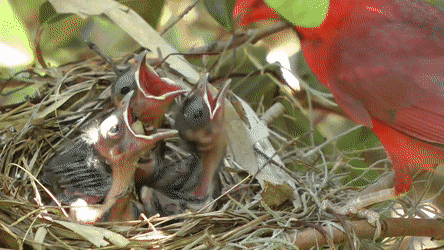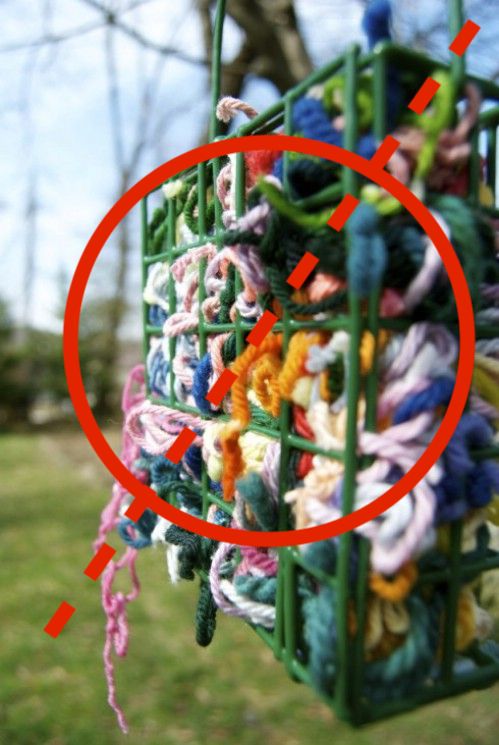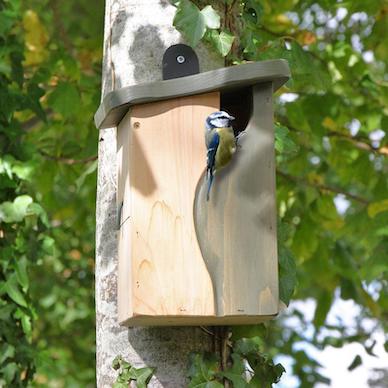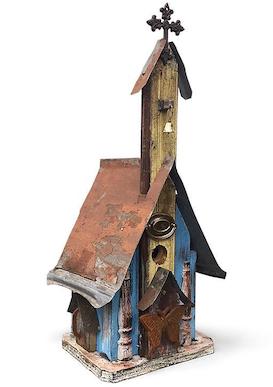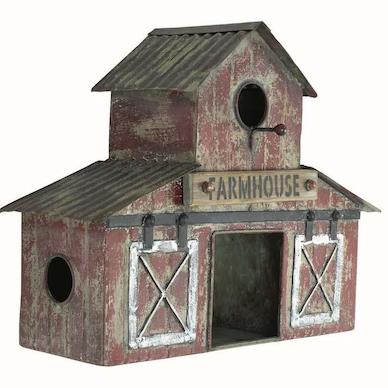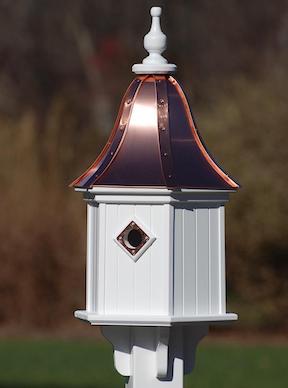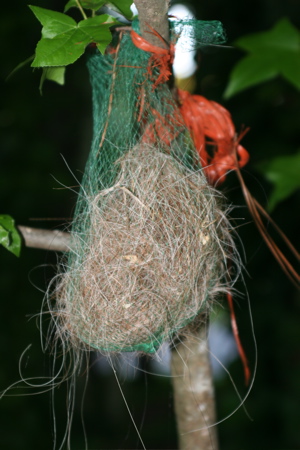-
Best Birdhouses in 2020…
Come with Free Nesting Materials!
Through March we’re giving away some organic premium nest materials with all birdhouses. North American songbirds adore our nest materials… even those who may not use a birdhouse will partake! A few of those non-cavity dwellers (who prefer to nest in trees and shrubs) include; cardinals, goldfinches, house finches, blue jays, robins and others.
Although the materials are found in nature, you might just jump-start the nesting process by offering the materials and having any existing birdhouses cleaned out and repaired if necessary… before birds are scouting! Unusually warm temperatures around most of the country have birds at least looking for the perfect home already.
Because backyard birding has become so popular, you may have seen all the DIY nesting material tutorials and posts on social media. If it’s on the web, it must be true… right?
Nope! Especially if you’ve seen this image or similar with yarn strings in a suet cage.
Please avoid! The DIY part is perfect and we do encourage it – but with natural, healthy and correct materials.
Refrain from anything with dye as its not found in nature and may be harmful to hatchlings and older nestlings alike. If using raffia, strings or stringy moss (Spanish moss) be sure to cut strips short. Two to three inches is plenty as strings may become tangled in little birdie feet! Should this occur, the bird’s circulation could be in danger- possibly constricting blood flow.
Should blue jays be terrorizing your hanging baskets, they’re most likely after the coco liner or moss for nest nest construction. Best to take an extra liner and cut pieces to place on the ground or in a suet cage.
We have several older blog posts on the subject… from years ago and prior to social media hype. Examples from our own yard show how easy it is to DIY safely and correctly.
Dryer lint: Steer clear! Even though it’s so soft & fluffy, fibers may contain dye which once again, are not found in nature.
Pet hair: Definitely a yes unless fido or fluffy is on medication or they’ve been treated with flea & tick products.
Always: Let birds do the interior decorating! Place nesting materials nearby so they can gather what works best in their own birdhouse.
You can encourage residency and have nesting birds grace your place this season… whether they use birdhouses or not!
Oh yeah… a few 2020 birdhouse models that rock!
-
Entice Birds With Nesting Materials
Most folks start with birdhouses and bird feeders to attract wild birds, and this is the perfect way to explore the great hobby of backyard birding. There are many other ways to increase the number of visitors and the number of species to your yard. Water is the number one element. Many birds who never visit a feeder will frequent a yard that offers a continuous fresh water source like a bird bath. Especially during frigid winters when water sources tend to freeze and become scarce, birds depend on a known spot for fresh water. Our bluebirds even over-wintered here in North Georgia, largely because of the three heated bird baths in the yard. Oh yes, the live mealworms helped too!
Many desired songbirds birds (like cardinals and finches) are not cavity-dwellers either, meaning they’ll never use a birdhouse.
Which brings us to yet another feathered friend favorite. Nesting materials are extremely important to birds in early spring. With a severe shortage in natural habitats, many depend on bird-friendly yards for their residence. There are all kinds of kits which offer refills too. This nesting material wreath is one, complete with feathers, cotton fibers, hemp, and raffia. The Bird Nester is a large, cage-like holder for cotton fiber nesting material, and offers refills as well. Even the Hummer Helper, which is nesting material designed specifically for hummingbirds offers refills.
Offering wild birds nesting materials in your yard really helps them to thrive and flourish. You can even craft your own materials using dryer lint, pet hair, cotton yarns, and mosses used in decorative floral design. Use a standard suet cage for holding the materials, or a mesh produce bag from the grocery store (like the kind apples come in). Late winter to very early spring is the best time to set them outside for birds. Simply hang from a tree branch, where they’ll be easily spotted, or even from one of the arms on your shepherd’s hook……happy birding!
-
Simple Nesting Material for Your Birds
Entice and encourage birds to nest in your yard with simple materials found around your home. Although there are all kinds of cool nesting material kits out there, you can do this one yourself… easily!
Start with a suet cage or even a mesh produce bag, like the kind apples come in at the grocery store. Next time you empty the lint basket in your clothes dryer, nix that soft, fluffy material as it’s just not natural.
Got a cat or dog? Pet hair is keeper. If you brush your pet, save the hair that accumulates in their brush. But steer clear if Fido or Fluffy has been treated with flea & tick meds. If you happen to have a horse… even better! The nesting material shown here is horse hair. Mostly from the mane and tail, it makes for great stuff to help bind the birds’ gatherings into a nest.
Ever work with silk or dried flowers? The decorative moss, especially Spanish or sphagnum moss is wonderful. Stuff a little moss into the nesting ball too, but keep strands short. They even like bits of raffia and especially feathers. Hang your nest ball from a branch in a visible spot for birds to easily see it. Somewhere in the proximity of existing bird feeders or birdhouses is best. Don’t pack the materials too tightly as a generous air flow dries them quicker after rain.
Simple materials from around your home, that are usually discarded, make for great nesting materials to help birds thrive and flourish in your backyard. You can entice birds to stick around, without adding more feeders and houses, but by offering valuable nesting material for them to help raise their families. Don’t forget the shallow fresh water too!

